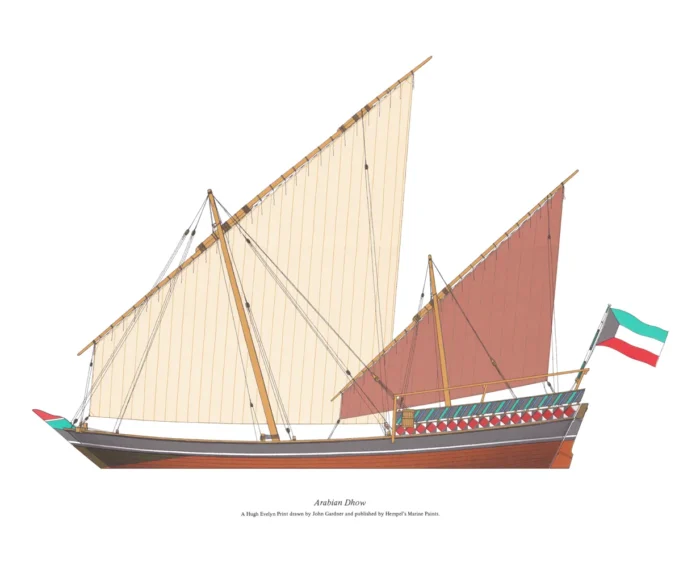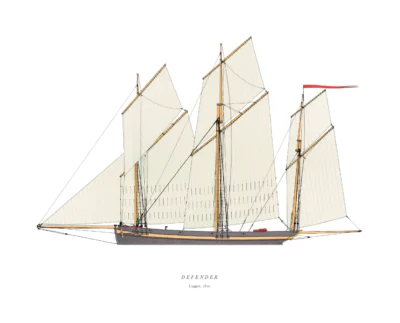Arabian Dhow
£25.00
Arabian Dhow: (scroll down for a more detailed Description)
Published c. 1970 by Hempel’s Marine Paints; a Hugh Evelyn © print drawn by Scottish marine artist John Gardner (1930-2010)
Size: c. 43 x 35 cm [17″ x 14″] (may vary slightly from printers’ cut 50 years ago)
Printed on high white matt cardstock 135 g/sm²
Print is LARGE size – shipping is the same for 1 to 10 prints (based on largest print size in your order) – see Shipping & Returns.
In stock
Description
The dhow is the generic name of several traditional sailing vessels with one or more masts with settee or sometimes lateen sails, used in the Red Sea and Indian Ocean region. Historians are divided as to whether the dhow was first built by Arabs or Indians. Typically sporting long thin hulls, dhows are trading vessels primarily used to carry heavy items, such as fruit, fresh water, or other heavy merchandise, along the coasts of Eastern Arabia, East Africa, Yemen and coastal South Asia. Larger dhows have crews of up to thirty, smaller ones around twelve. The print portrayed is of a Baghlah – from the Arabic language word for “mule”. A heavy ship, this is the traditional deep-sea dhow although it may be called a Ghanjah or kotiya – a large vessel, like the Baghlah, with a curved stem and a sloping, ornately carved transom. This vessel is set with two masts with settee sails (sails in quadrilateral rather than triangular shape). The exact origins of the dhow are lost to history. Most scholars believe that it originated in India between 600 BC to 600 AD.
Additional information
| Weight | 0.0239 kg |
|---|---|
| Dimensions | 44 × 35.5 cm |





